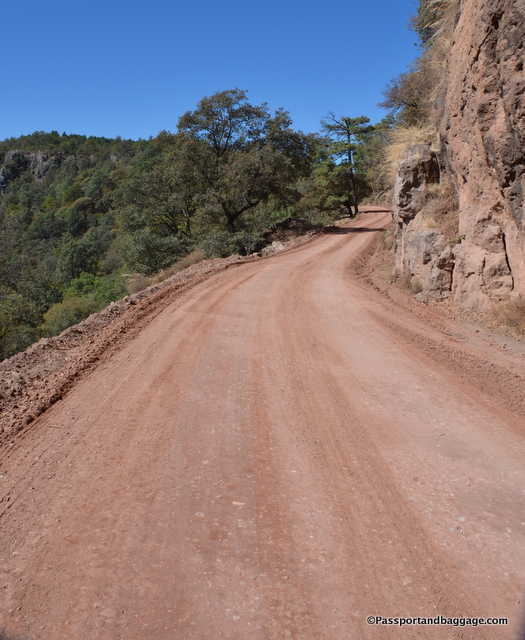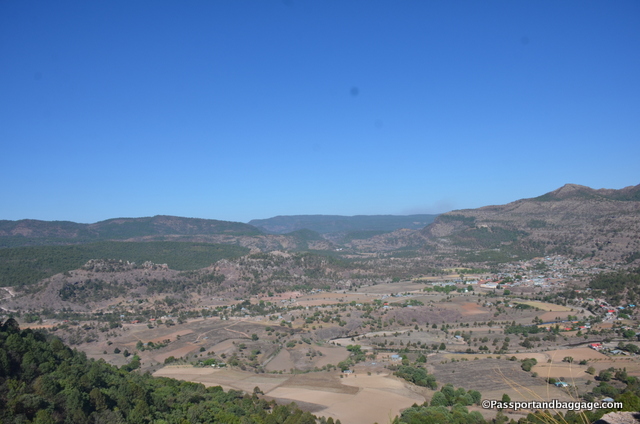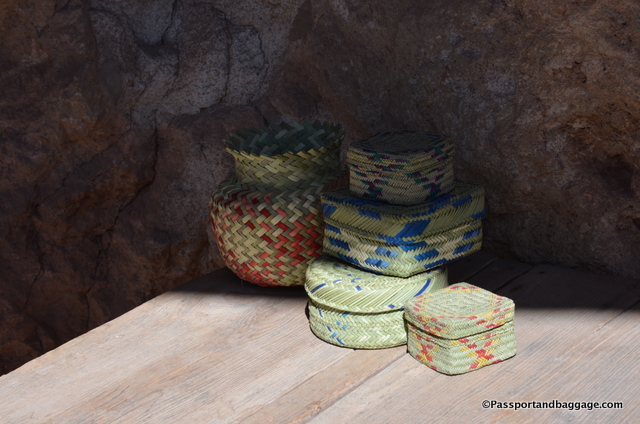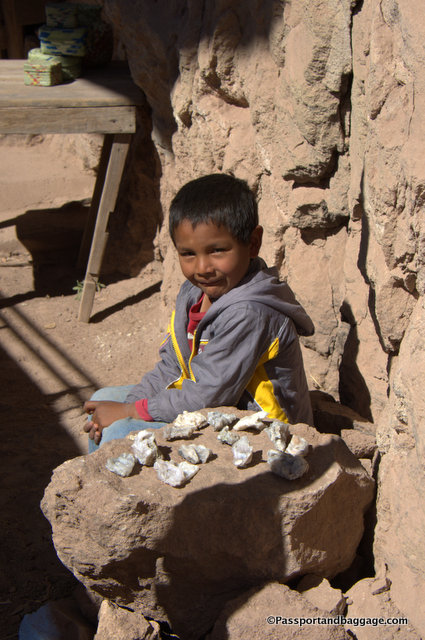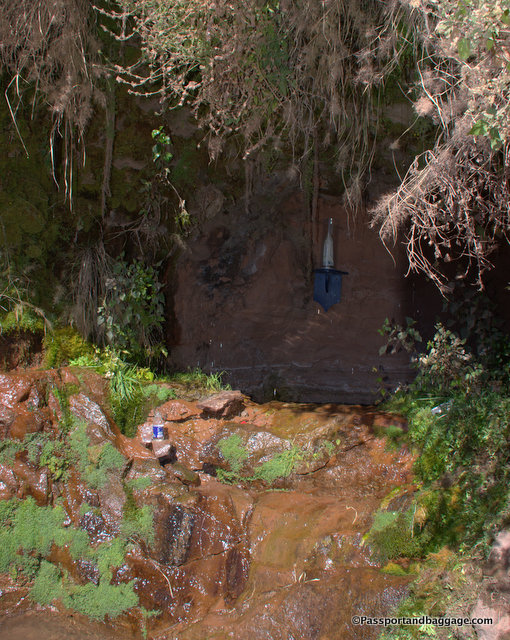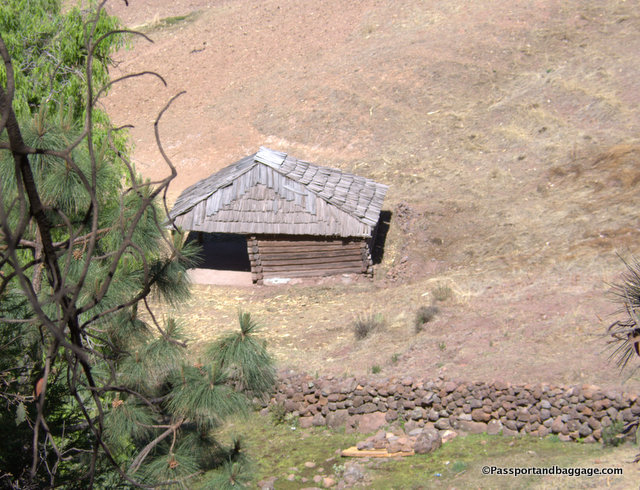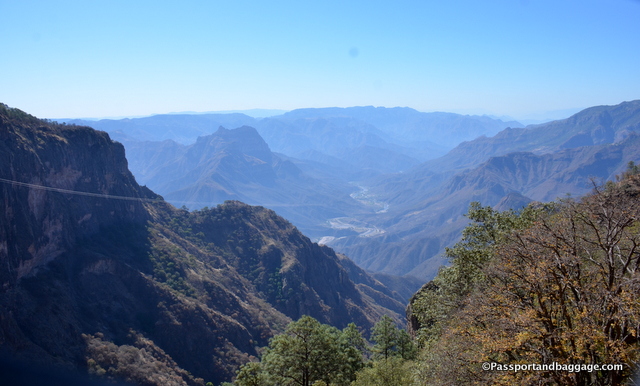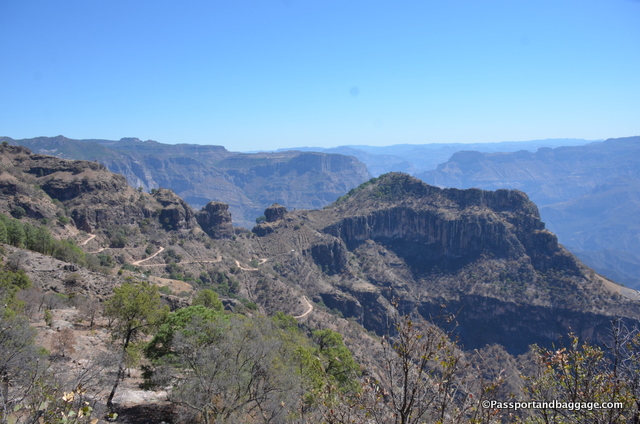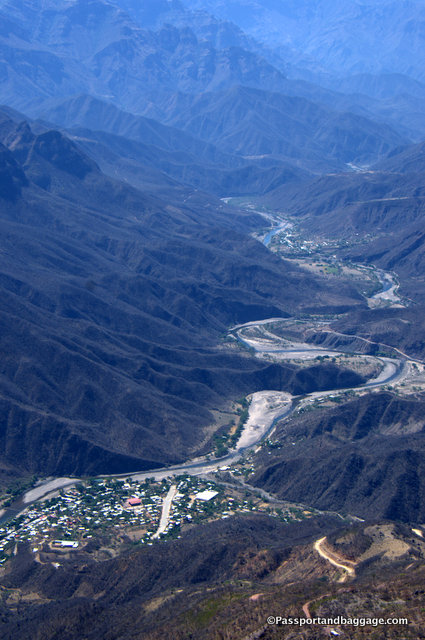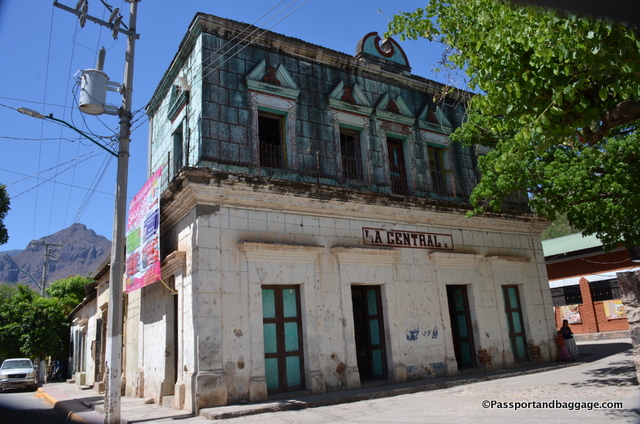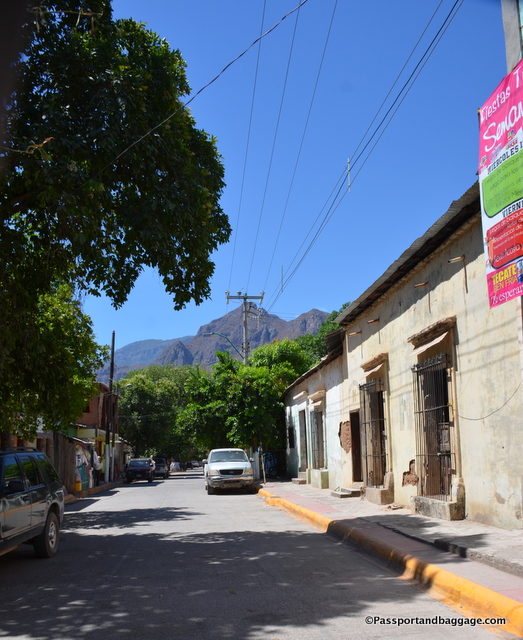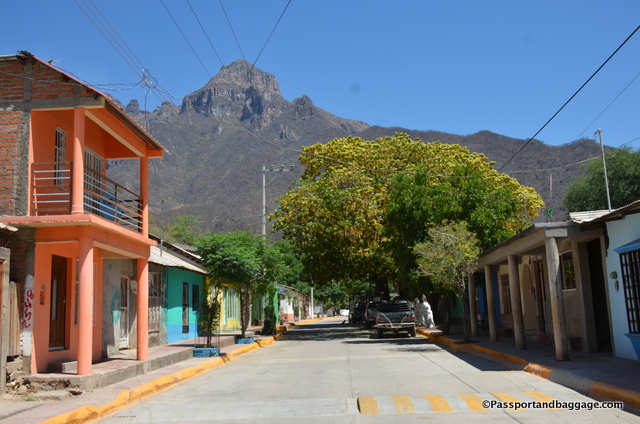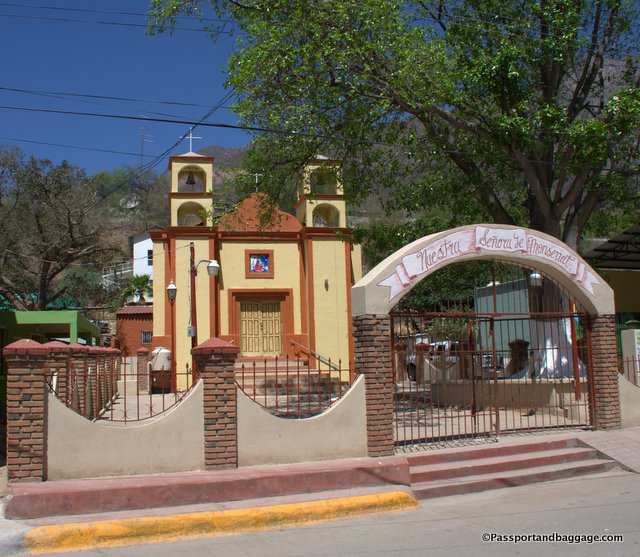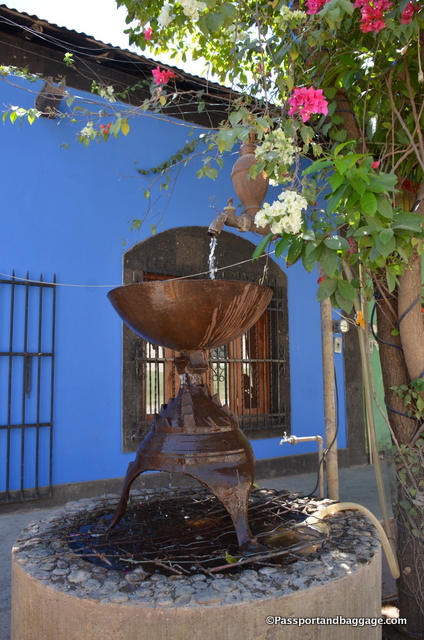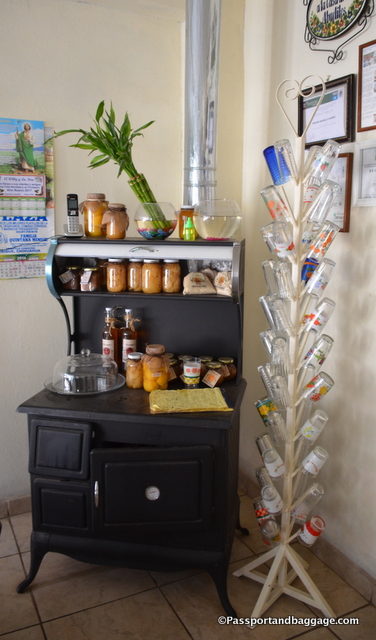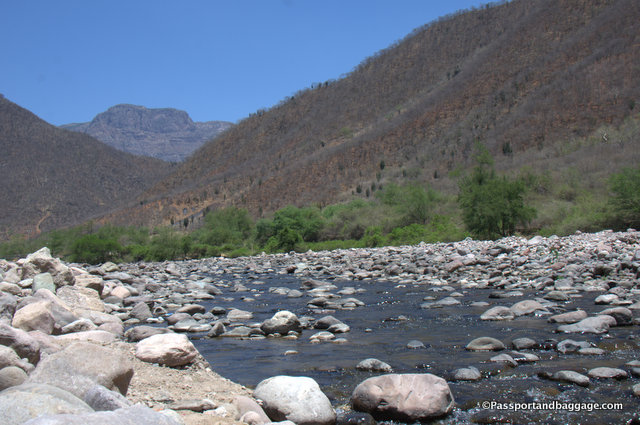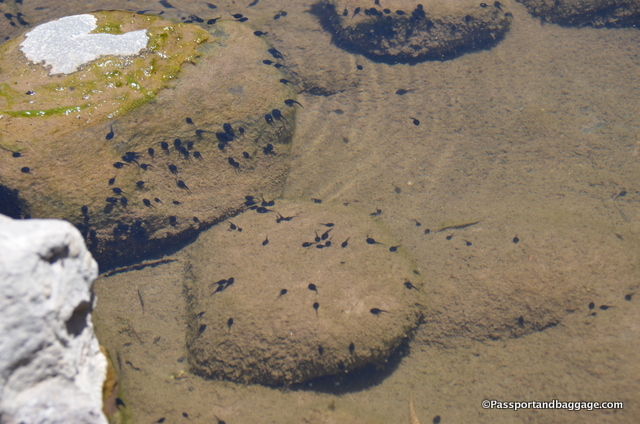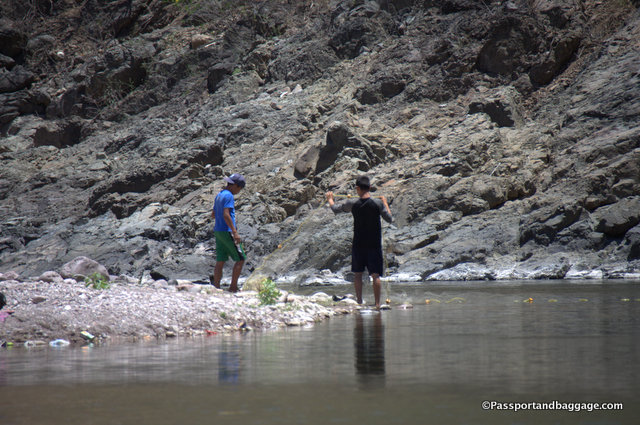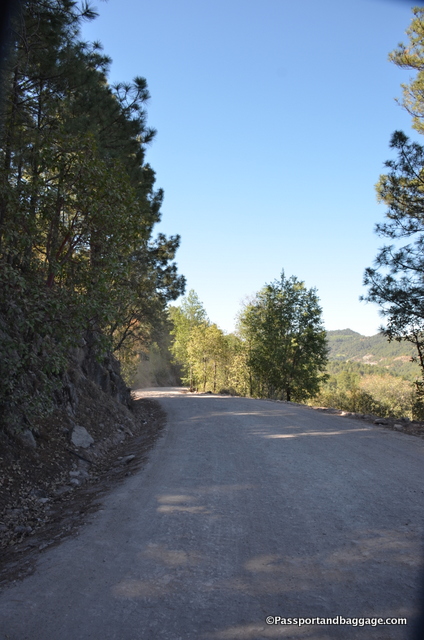The Road to Urique
May 4, 2017
The road from Cerocahui to Urique took about 2 and 1/2 hours one way on an unpaved very bumpy road. The photo of the road above is of a nice stretch of the road. The trip is absolutely worth it for the stunning views of the canyons of the Sierra Tarahumara.
The first stop and the end of any form of paved road is on the rim of the canyon, (6890 feet above sea level) that looks down onto Cerocahui, which sits at 5250 feet above sea level. There is actually a small twin-engine plane in this photograph, that is how high up one is at this point.
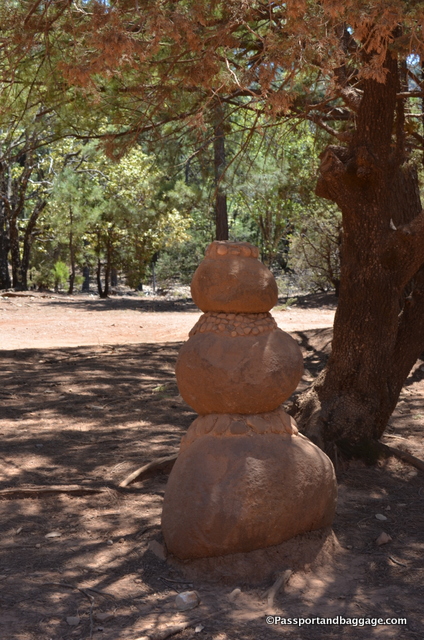
A fun rock snowman on the side of the road. Just past this statue is the ONLY road to Los Mochis. It is dirt all the way and takes approximately 8 hours. A good reason to take the train.
The road continues on through forests of pine and oak with the occasional wandering cow. Rather quickly you reach the highest point in the trip at 7382 feet above sea level.
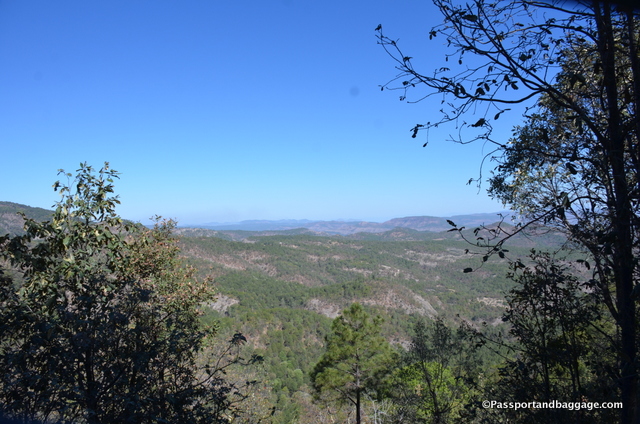
The highest point in the trip looks over the Cojahuachi Valley, which translates to Place of Flowers.
The road continues downhill from there at one point crossing Tcitci Móko River (pronounced Chichimoko, it is a Tarahumara word, meaning Chipmunk). The view is why you are on this road, and the word wow was uttered from my mouth more times than I could count, but there are also a few interesting places to stop. The first was a small cave which once held a family of 14 and now has a woman selling baskets. The cave held a rack of her baskets and a small table, and there was not much more, how 14 people lived in it is hard to imagine.
Nearby is a spring with continuous running water and the Virgin Guadalupe overlooking the well. It is May and the rainy season does not start until June, so the entire valley is very hot and very dry. The spring fed well is a welcome site.
You pass a few scattered homes of the Tarahumara. Many are made with adobe, and if there is a tin roof, you know they received assistance from the government for the construction. A more typical home is all wood.
After approximately 2 hours you come to a very large rest stop at about 2100 feet above sea level. There are viewing platforms and bathrooms.
Look into the photo above. This is the city of Urique. The long paved item in the middle of town is the airport. When a plane intends to land, they circle the city a few times, the police come out and shoo away the chickens and cows to ensure a safe landing. The airport is used most often during the Copper Canyon Ultramarathon.
The long ride down finally sets you in Urique also, the county seat. The word “Urique” comes from the Tarahumara word “Uli” meaning “land below” which to them is synonymous with hot land. The “Uli” was followed by “-qui”, a meaningless ending added to words so they sound better, thus “Uliqui” which the Spanish changed to “Urique”. The Urique Canyon is one of the major canyons within Copper Canyon.
In 1684, the Jesuit Priest Juan Maria Salvatierra became the first white man to descend to Urique. He had already founded the Mission of Cerochui and was responsible for much of the development of this area.
Father Salvatierra later accompanied Padre Kino to Baja California to begin construction of the mission at Loreto, the first mission in what later became known as California’s mission trail.
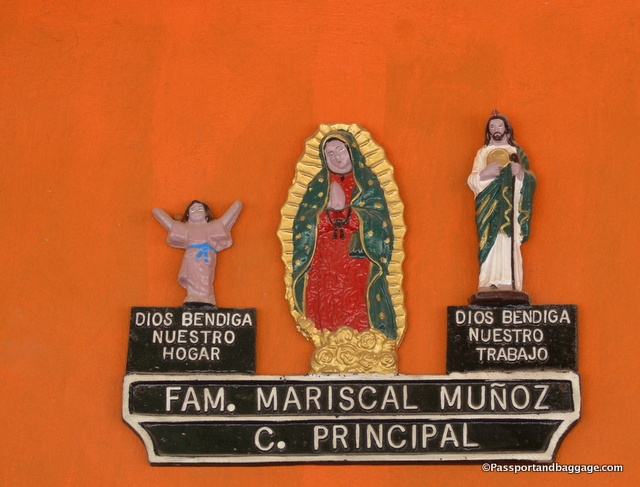
The church is very important in this part of Mexico, and these signs can be found over most every door in Urique.
It was May, the rainy season just around the corner, and the river was very low. It will soon begin to fill and has been known to wash away bridges and flood the town.
The road to Urique was opened in 1965 and provided the first vehicular access to Urique. Prior to its construction, all merchandise and people came to Urique on foot or on pack animals.
Urique received long distance telephone service in 1995 and local service in 2001. Power reached the town in 2001. Prior to that, a diesel generator operated several hours per night providing electricity. Now, you will find internet cafes.
Urique is also famous as the beginning and end of, what is considered, the most grueling foot race in the world, the Copper Canyon Ultramarathon.
The race consists of a 21-plus-mile loop up-river, followed by another 18-plus-mile loop down-river, then continues up-river again on a rough dirt road out and back to the Tarahumara village of Guadalupe Coronado for another 10 miles, before ending in the plaza of Urique. The estimated total climb is 9,300 feet, nearly two miles, in the deep canyon, with equal descent. The run was the subject of a 2009 book Born to Run.
The trip back up is not quite as long, but your potential to meet oncoming trucks and cars keeps you on your toes.
